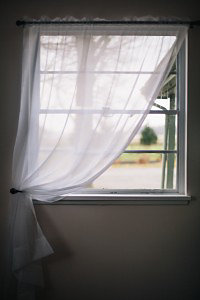Why Getting Up On Winter Mornings Is Hard (And How Smart Home Lights Can Make it Better)
Do you feel groggy on winter mornings, even after eight hours or more of sleep? Do you find yourself hitting snooze and dreading getting out from under your covers?
You’re not alone. And the problem might be that humans simply aren’t programmed to rise before the sun.
You see, your internal biological clock (also called your circadian clock) regulates your sleep-wake schedule. And your circadian clock is programmed to wake you up like this:
- The rising sun triggers a decrease in the production of melatonin (a hormone that helps you sleep) and begins the waking process.
- The slowly increasing amount of light gently moves you into lighter stages of sleep (that are easier to wake up from).
- You eventually awake from the increased light and/or sounds around you. This can be 20-30 minutes after the sunrise initiated the waking process.
This slow process makes you actually feel awake when you wake up.
For most of us, however, this cycle is short-circuited. We use alarm clocks that jolt us awake before sunrise. We often go from sound asleep to awaking to a beeping alarm.
This leaves us in a groggy state of half-sleep that can last as long as 2 hours from the time we actually wake up. (One researcher calls this state social jetlag.)
But aside from begging your boss to let you come in later, what’s the solution?
Enter: Sunrise-simulating alarm clocks
A sunrise-simulating alarm clock (also called a wake-up light) does exactly as its name implies: It simulates a sunrise to help you wake up more naturally.
Here’s how it works:
- You set the time you want to wake up. Let’s say it’s 6:30 AM.
- 15-30 minutes before you want to wake up, the light will turn on slightly and get slowly brighter. Some models also change the color of the light as it gets brighter.
- At the time you selected (6:30 AM in our example), the light is at full brightness and an alarm sound.
By the time the alarm sounds, you’re ready to get up because your body has been slowly transitioning into lighter stages of sleep. The alarm at the end simply lets you know it’s time to get out of bed.
But these wake up lights can be quite expensive (ranging from $80-$180). Luckily, if you already have smart lights in your bedroom, you may be able to make your own…
How to make your own sunrise simulator using smart lights
To make your own sunrise-simulating alarm clock, you need 2 things:
- Smart, dimmable lights
- Software/controller to program the lights (usually this is an app)
Now, you need to set up a scene or automation schedule that will automatically:
- Start turning on your bedroom lights 15-30 minutes before you want to wake up.
- Set the lights to reach 80-100% brightness and stay on at the time you want to wake up.
Continue to use your current alarm. Now in the morning, your bedroom lights will trigger your body’s wake up sequence before your alarm sounds.
Want more specifics on how to set up your own wake up light? Here’s a great tutorial for 3 of the most popular types of smart light bulbs.
Want your own home automation system?
Contact BriteBox. We can help you select, install and setup a home automation system in your Atlanta area home.
Related Reading
Subscribe To Our Newsletter
Get up-to-date current news, promotions, and industry tips.

